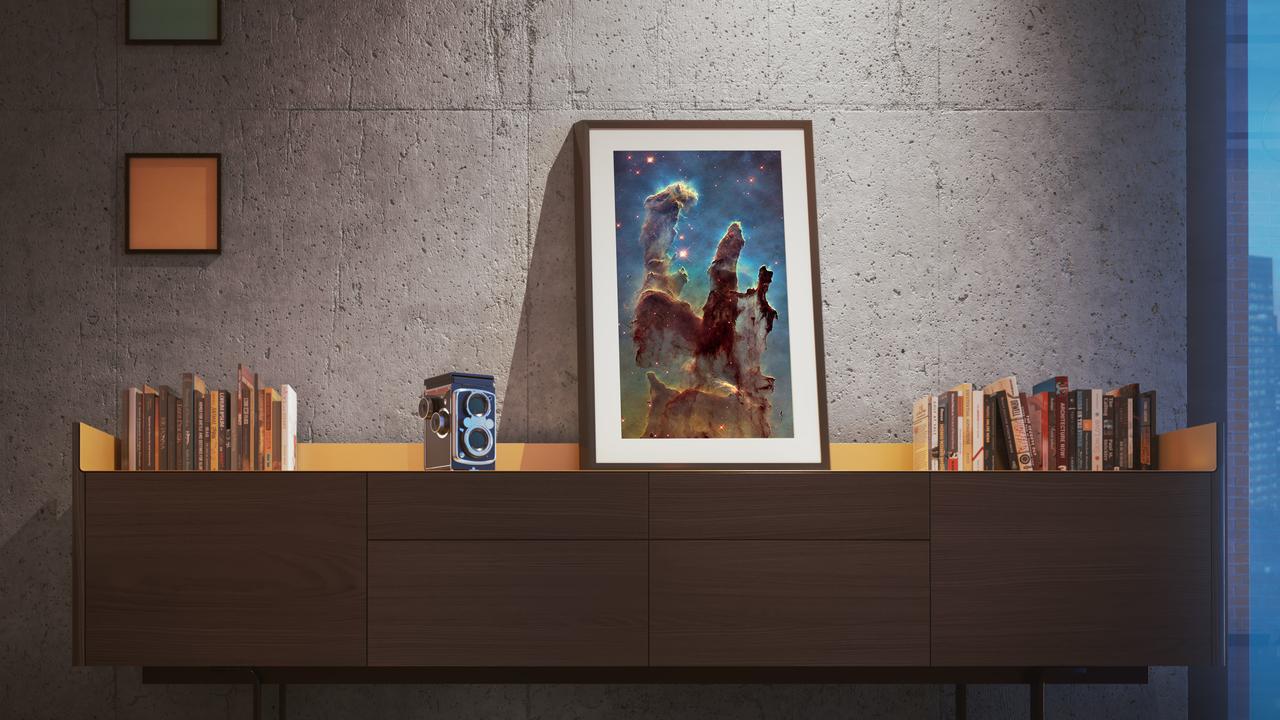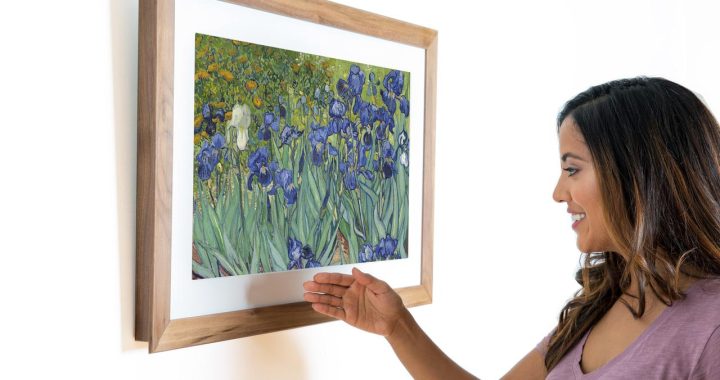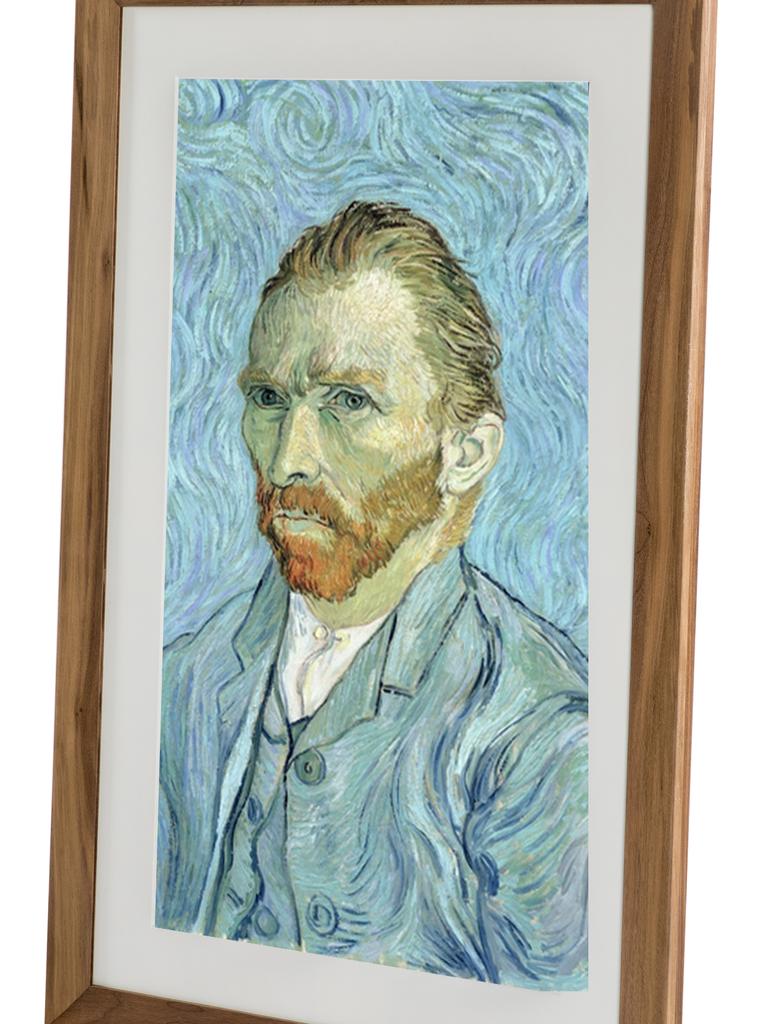Meural is doing to art what Apple Music and Spotify did to music. Soon in Australia, you’ll pay a monthly fee to access tens of thousands of digital artworks and display them in a smart art frame.
Such is the aim of Meural, a New York-based art technology start-up recently acquired by networking giant Netgear. You’ll adorn your walls with masterpieces housed in an LCD frame called a Meural Canvas. It’s like a big version of a digital photo frame.
Meural co-founder and chief executive Vladimir Vukicevic told The Australian the LCD screen had been dimmed and software and hardware used to offer a realistic-looking canvas with a sense of texture.
A sensor reads the ambient lighting level and adjusted the brightness to match surroundings. Gamma correction is used to offer authentic colours.
Meural has already sold tens of thousands of first-generation frames in the US, but under Netgear’s ownership from August it has been working to revamp the frame for global distribution. That includes an overhaul of the electronics.
Australian prices for the new Meural canvas are not yet available, but as a guide, the first-generation Leonora canvass made from Poplar and in black and white costs $US595 ($840), while the Winslow canvas made from Walnut costs $US695 ($980).
You can control the Meural by touch and gestures and from its mobile app.
The other Meural component is its huge library of artworks that you access like Apple Music, Google Music and Spotify.
While Australian subscription rates are unknown, US subscribers pay $US4.95 a month, or $US39.95 a year to access more than 40,000 paintings, photographs, drawings and illustrations.
The library has only a limited amount of video as part of particular artistic works, as the emphasis is on stills.
Classics by Rembrandt, van Gogh and Monet, NASA satellite imagery and Conde Nast fashion photography are among offerings. There is also copyrighted works from the estates of artists such as Georgia O’Keeffe, Marc Chagall and Jackson Pollock.
Mr Vukicevic said establishing the library has been a massive challenge. Procuring images began in late 2015. While classic artworks were out of copyright, museums generally owned the copyrights of digital reproductions and there were organisations that managed these rights, he said.
He said museums were the best source of high quality digital reproductions.
“Over the past decade, we’ve seen emerging technologies breathe new life into almost all creative mediums — music, television, music — and herald new opportunities for their respective creators,” Mr Vukicevic said.
As with music libraries you can create playlists of favourite artworks that display one-by-one over time.

You can also set schedules. You might show a slowly rotating list of van Gogh paintings in the morning and a gallery of your own photos at night.
Meural offers curated playlists and they have the potential to teach you lots about art. One playlist might guide you through the development of Renaissance art, another might illustrate the development of a particular artists style. There were special playlists for an artist’s birthday.
Users also can take photos at home and send them straight to a Meural Canvas using the smartphone app. The frames can display works horizontally and vertically.
There’s one downside. The LCD screens have to be connected to power which means a cord. You either have an electrician install power-points behind the Meural Canvas to hide the cord, or make do with the white cloth-like cord designed to be inconspicuous.
Mr Vukicevic said that roughly a third of customers hid the cord in the wall, a third put the canvas on an easel and camouflaged it that way, while a third (mainly Millennials) seemed not to care.

He said Meural had dabbled with using colour e-ink screens, similar to e-reader screens. These screens could be battery operated, but the technology was not ready, expensive, and colour reproduction was limited.
Meural Canvas connects to a regular home Wi-Fi network.
Mr Vukicevic said the smart art frame was timely as the world’s arts institutions were struggling to maintain the public’s limited attention and adapt to the world’s rapidly evolving culture.
“Meural’s ultimate goal is to use our technology to bring art into every home, and to create lasting, fluid relationships between artists, arts institutions, and art lovers.
“We see the next generation of the Meural Canvas, the expansion our art library, and our new brand identity as significant steps towards achieving that vision.”
Published in The Australian newspaper.

